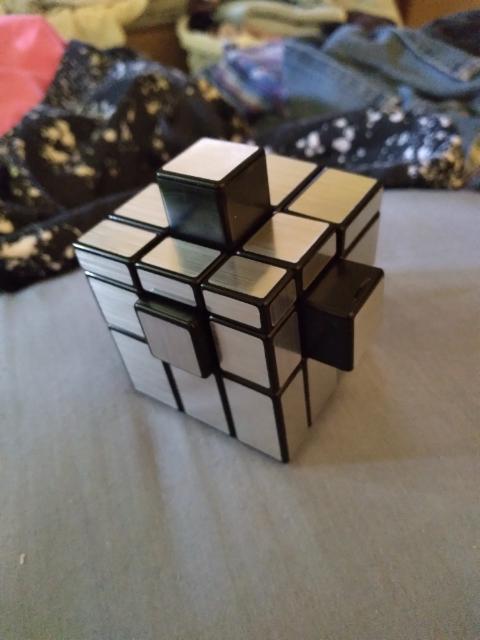

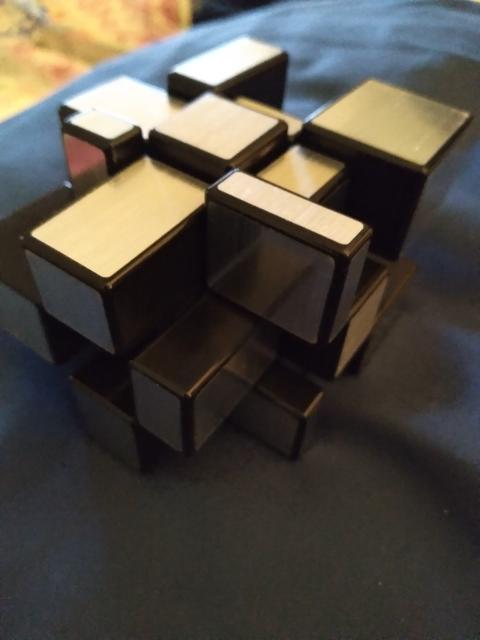
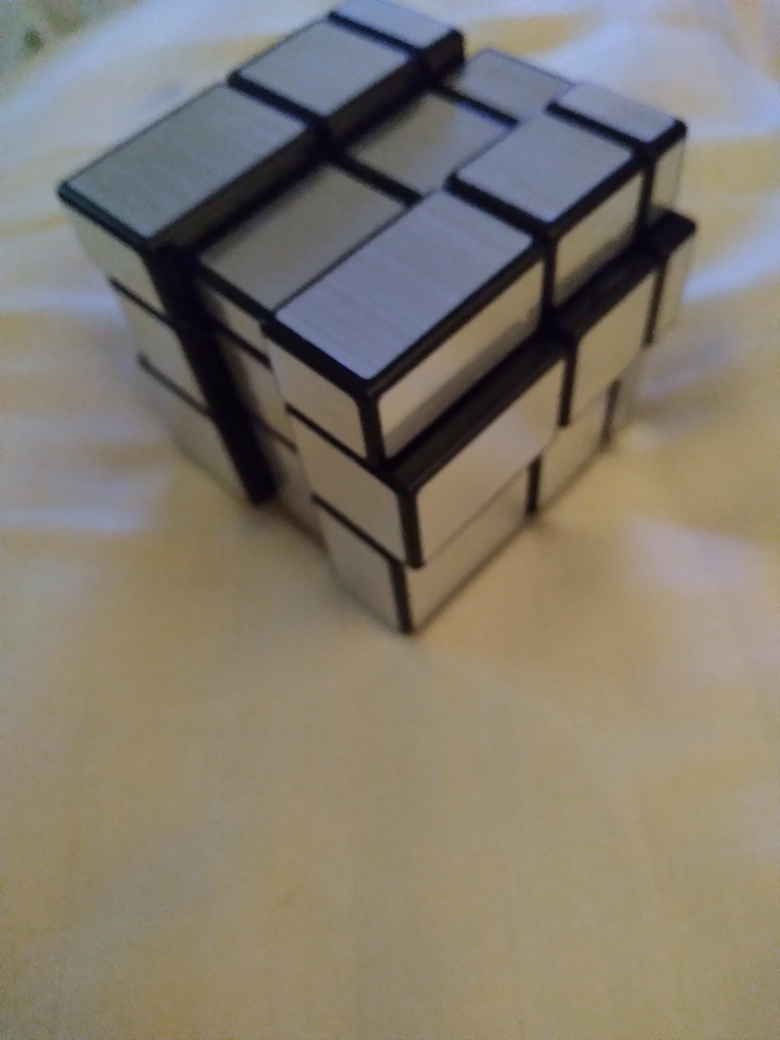
This page presents several pretty Rubik patterns that are only a few moves from start. I haven't taken the time and trouble to incorporate the corresponding images. If you want to see the patterns, apply the moves to your own cube, and watch what happens. Moves are designated TBLRFK, for clockwise turns of the top, bottom, left, right, front, and back faces respectively. Lower case letters indicate counterclockwise twists. If you have any other pretty patterns, please mail them to me, and I'll put them on this page.
You cann apply these moves to the standard 6-color cube to create color patterns, or to the monochrome rectalinear cube to create tactile patterns. On the shape cube, dots presents a central square that extends out from its face, or is recessed into its face. The checkerboard presents squares that rise above or below the background. Stripes are lines that rise above the face, or run below, like a road. And so on.

|

|

|

|
The slanted cube, with its many triangles, offers an entirely new palette for the artist. Consider this configuration, with its four-fold symmetry. No, it isn't just a few moves from start; I had to build it from scratch.

Here is the slanted cube under the checkerboard transformation. The moves TT and BB are not needed, as the cube retains its 4-fold symmetry. Thus this is just 4 moves from start.
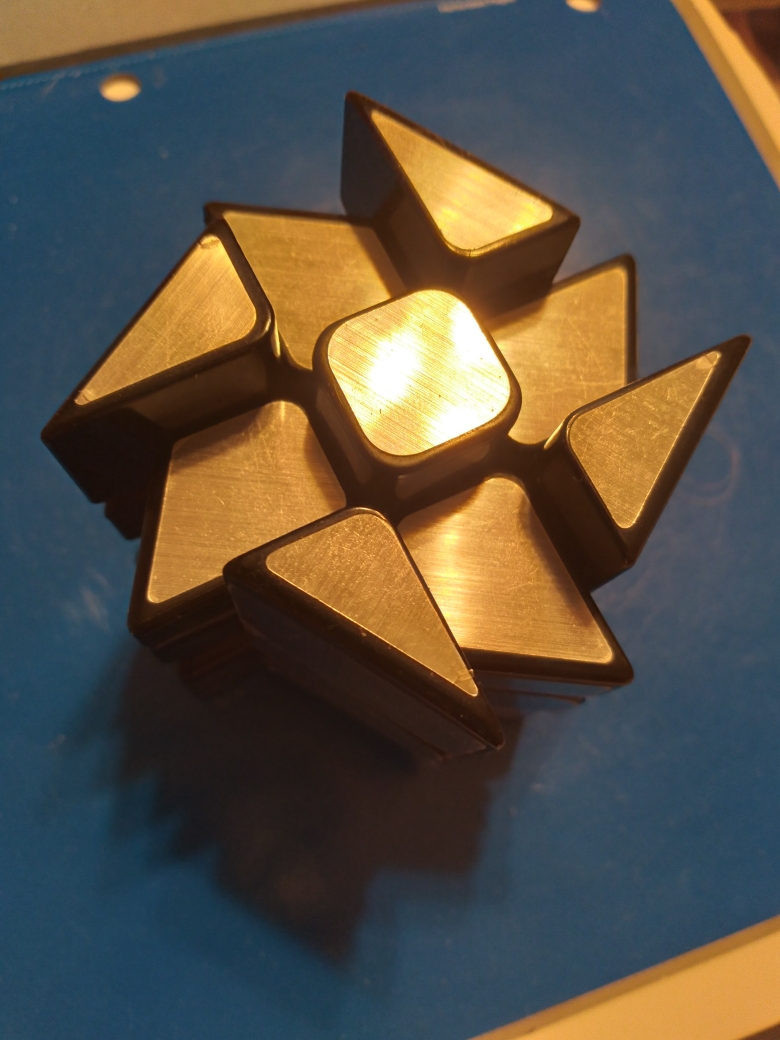
|

|
Here are two more patterns that are constructed from scratch. It's fun.

|
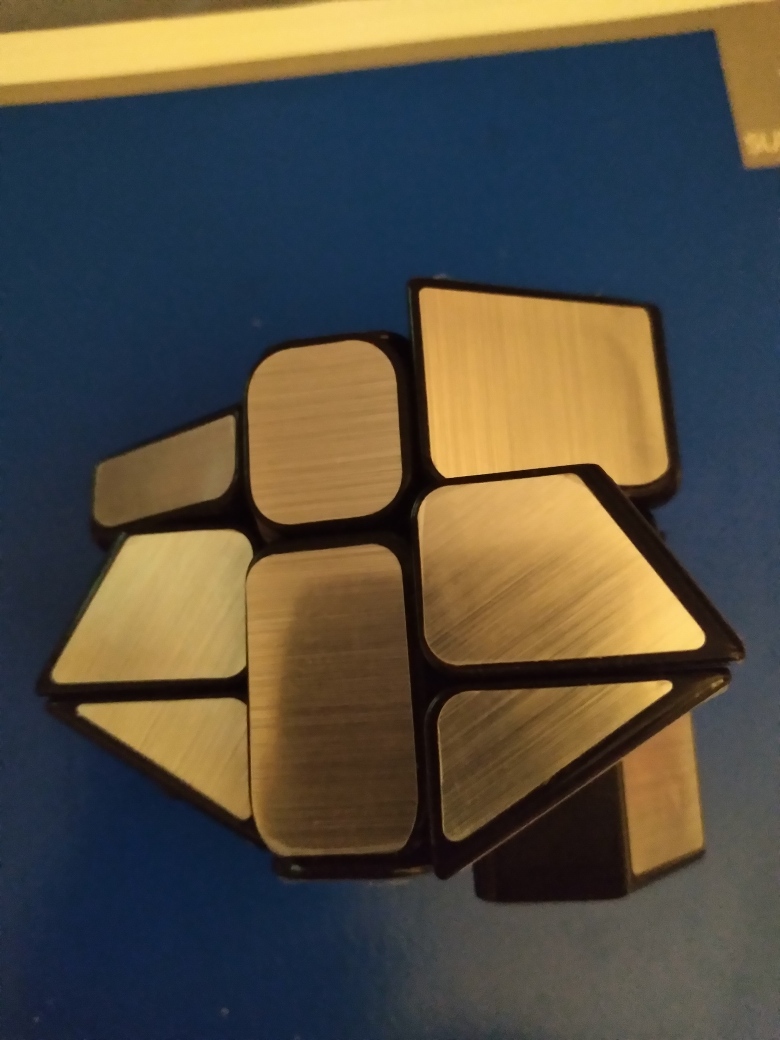
|
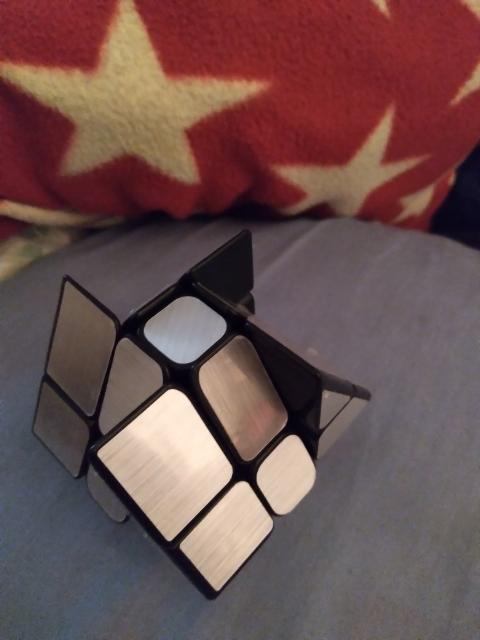
|
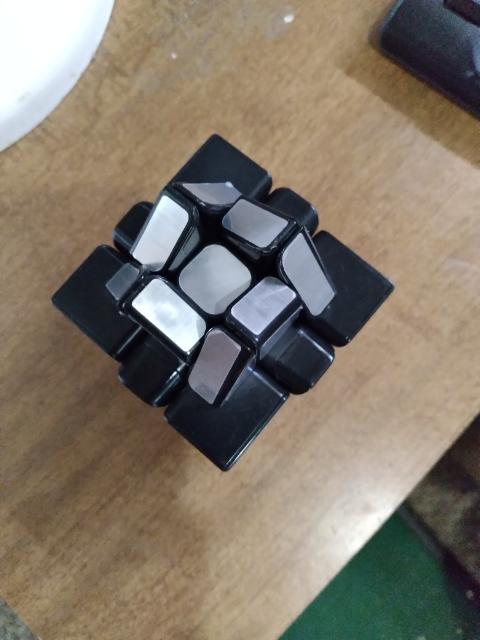
|
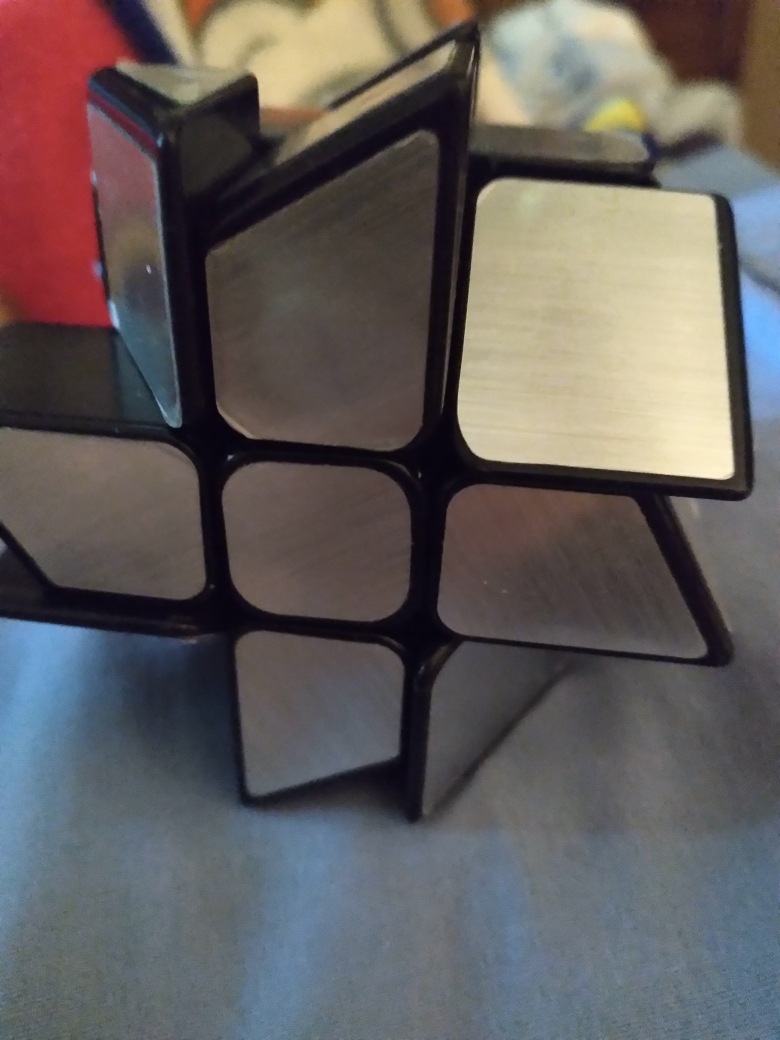
|

|
I believe this last is especially pretty, to wit I don't particularly want to take it apart. From start, put the thin layer on top, rotate the top corners clockwise, rotate the bottom corners counterclockwise, and adjust the three layers so the pieces line up.
Back to the Rubik home page.